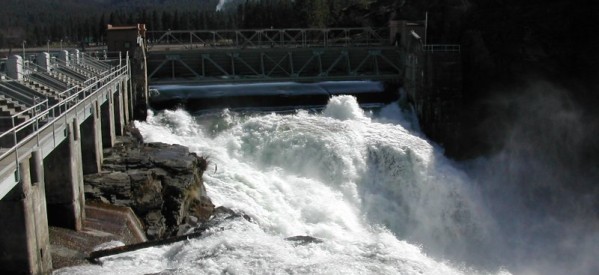Borneo’s Hydro Giant to Dwarf Sarawak’s Bakun Dam

Earlier last week it was revealed that state-owned China Power Investment Corporation was mixing forces with Indonesia to bring a mammoth hydro project to life never before imagined on Borneo. The vision dwarfs Bakun, the largest of the large dams so far designed for Sarawak, where Borneo’s largest facility currently churns to a beat of 2,400 MW.
With a whooping price tag of US$17 billion, the yet unnamed hydropower project was announced after a meeting between Indonesian Energy and Mineral Resources Minister Jero Wacik and China Power Investment Vice President Xia Zhong, China’s Global Times newspaper reported. Pointedly enough, the announcement comes just weeks after the World Bank made a very conspicuous backpedal on their policy towards the development of large-scale hydropower dams.
In the previous line of thought, the World Bank upheld that the social impact inflicted by such facilities created a negative externality so grand to outweigh the benefits of the river-belting power stations. This positioned then suddenly changed.
“Large hydro is a very big part of the solution for Africa and South Asia and Southeast Asia. I fundamentally believe we have to be involved,” said Rachel Kyte, the World Bank’s vice president for sustainable development, an influential member among bank’s top staff.
The earlier move to back away from hydropower developments “was the wrong message. That was then. This is now. We are back,” he added.
Sarawak and Indonesia can now expect a tacit nod from the multilateral institution in their ambitions to drum up the generation of electricity. Far ahead of Indonesia’s incipient endeavors, Sarawak’s strategy to produce 6,000 mw with the current four major dams in the pipeline could propel the state into a high-earning economy; given the current electricity tariff of 35 sen per kWh, approximately US$660,000 per hour could be generated.
Indonesia’s dreams are large and impressive but no such wealth can be gathered just yet.
The archipelago’s energy needs are forecast to increase by 10 per cent annually as the largest Asean economy continues to grow, tacking on tens of thousands of people into the ranks of the middle class, pressuring energy supplies along with them.
The World Bank’s flip flop will also give encouragement to Laos, Myanmar and the Philippines, who each have there own hydropower dreams yearning to be realized.
In Myanmar in particular, the 3,600 mw Myitsone hydroelectric facility is in the pipeline for construction the same partner of Indonesia’s grand dam – China Power Investment Corporation.
It must be said that Myanmar’s project has been met with common controversy as locals mass protests over the resulted flooding created by the reservoir. No matter the position of powerful development banks, this will be the reality.
As Indonesia looks to enter the Asean race for large-scale renewable projects, it must also be readied to articulately explain the execution and benefits of its energy strategy. Being careful to learn from Sarawak’s developmental errors in the past offers one lesson.
A large Chinese construction firm also built the Bakun dam, begotten by infrastructural issues due to poor building materials. Sarawak has since been able to walk away from the debacle with plans applied to future hydropower project; Indonesia must study these. The race is on.






